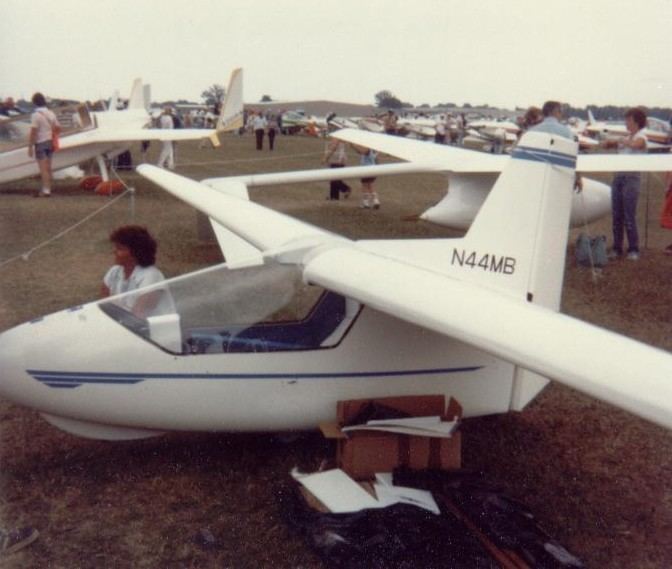Manufacturer Larry Haig | ||
 | ||
The Haig Minibat is a high-wing, single-seat flying wing motor glider that was designed by Larry Haig and at one time available as plans or in kit form for amateur construction. The kit is no longer available.
Contents
Design and development
The Minibat was designed by Haig as a motor glider, but without self-launching capabilities, instead the aircraft is launched by aerotow, winch launching or auto-tow. The small chainsaw engine provides enough power to ensure a positive rate of climb and prevent land-outs, but not enough power for launching. The design goal was a glider with slightly greater performance than the Schweizer 1-26.
The Minibat is constructed predominately from foam and fiberglass and features a monowheel landing gear. The engine is mounted in the rear fuselage in pusher configuration, with the propeller mounted unconventionally between the fuselage and the rudder. Wingtip extensions are available which increase the wingspan to 32.7 ft (10.0 m) and raise the aircraft's glide ratio from 23:1 with the standard 25 ft (7.6 m) wings to 30:1.
Operational history
In March 2011 there were ten Minibats registered with the Federal Aviation Administration in the USA.
Specifications (Minibat with wingtip extensions)
Data from Soaring
General characteristics
Performance
